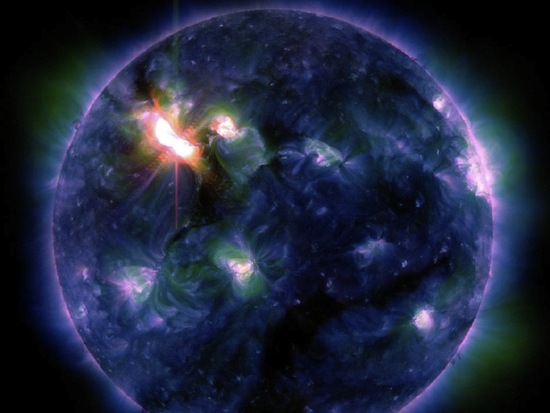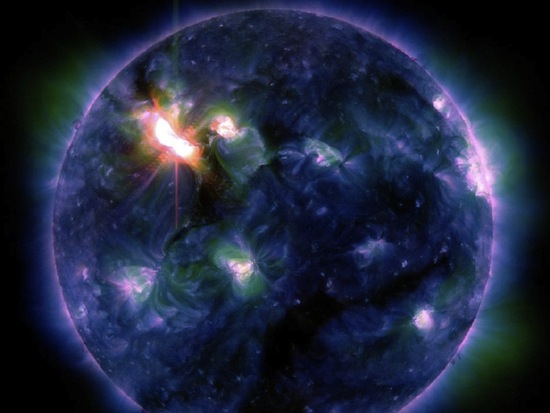Two solar flares burst out of the sun on March 6.
NASA notes: “One of the most dramatic features is the way the entire surface of the sun seems to ripple with the force of the eruption.” Badass!
The first flare was the second largest of this solar cycle (which started in 2009), and it’s traveling at 1,300 miles per second, which means it could sweep the continental United States in less than three seconds. It was scheduled to reach Earth at 1 a.m. EST this morning — give or take 7 hours.
Which means it’s already hit. And all’s quiet in the New York City outpost of GristList — no high-accuracy GPS failures, no massive internet shutdown.
We in the media get a little bit hysterical about solar flares. But with good reason. This solar flare is like that earthquake that struck the East Coast last year — not actually that big of deal. But a big one could cause widespread blackouts and snarl transportation. Comparatively, this storm’s just a short, dry cough. And one day the sun’s going to clean its lungs and cough up a big, wet mass of coronal mass. We’ll notice that one.




